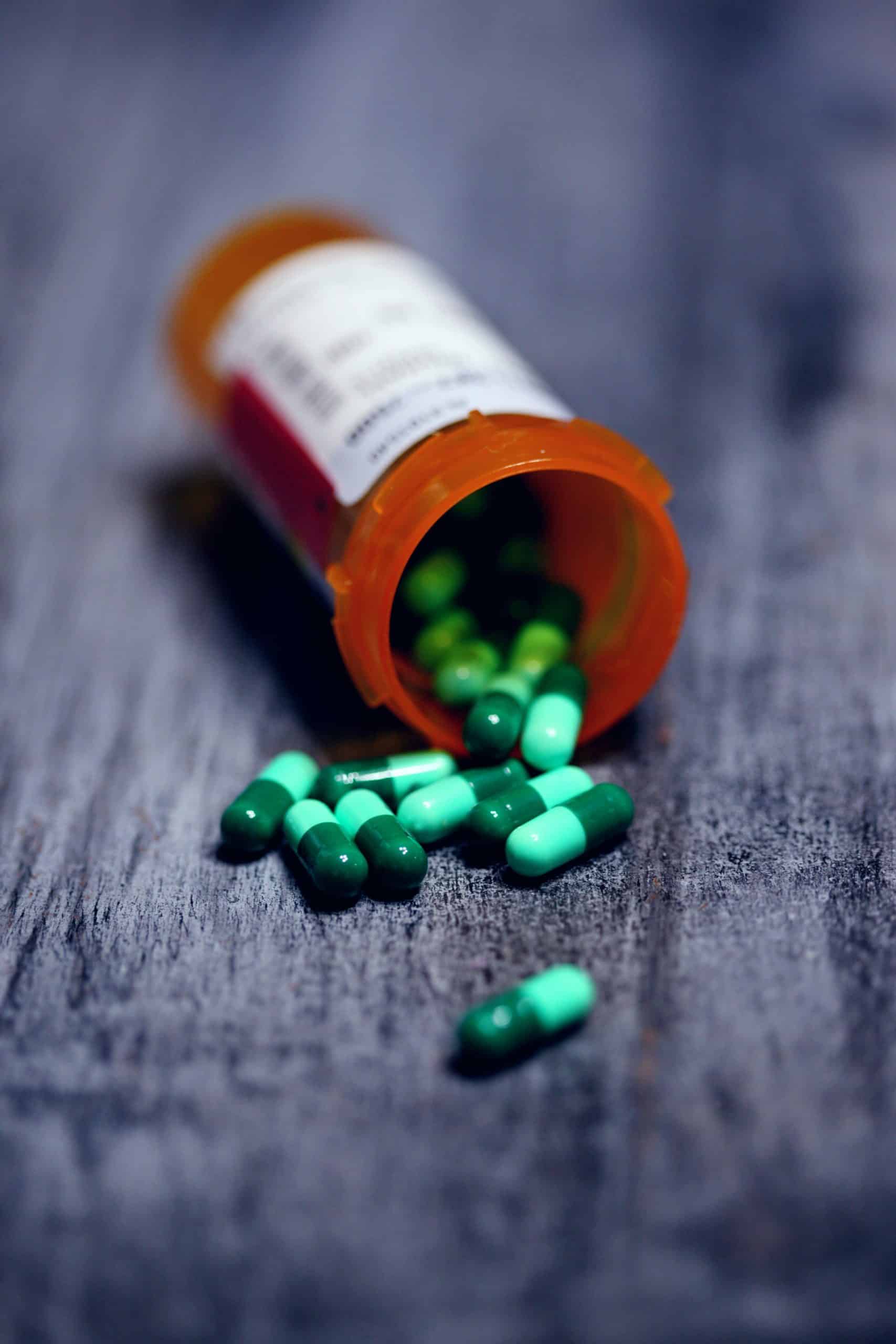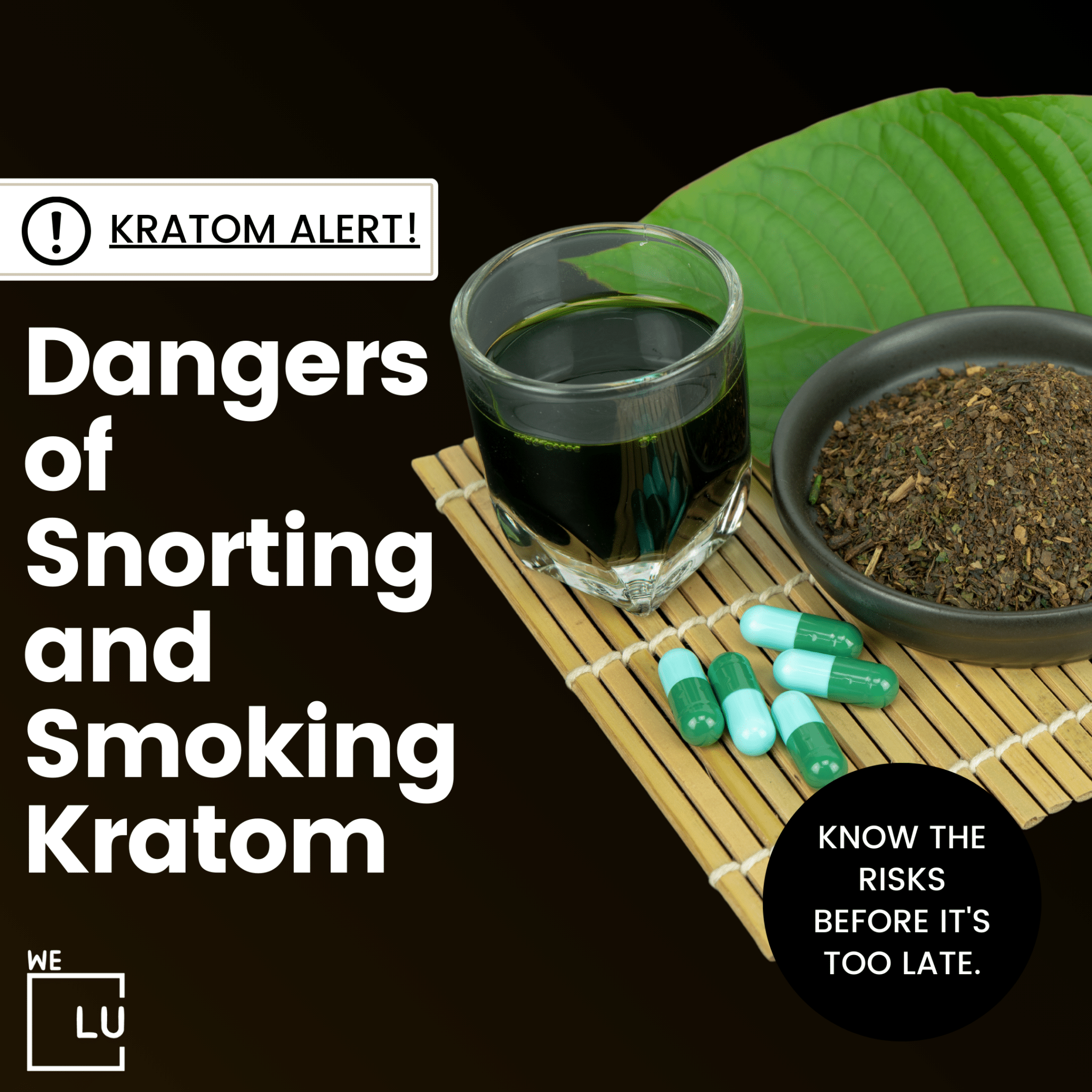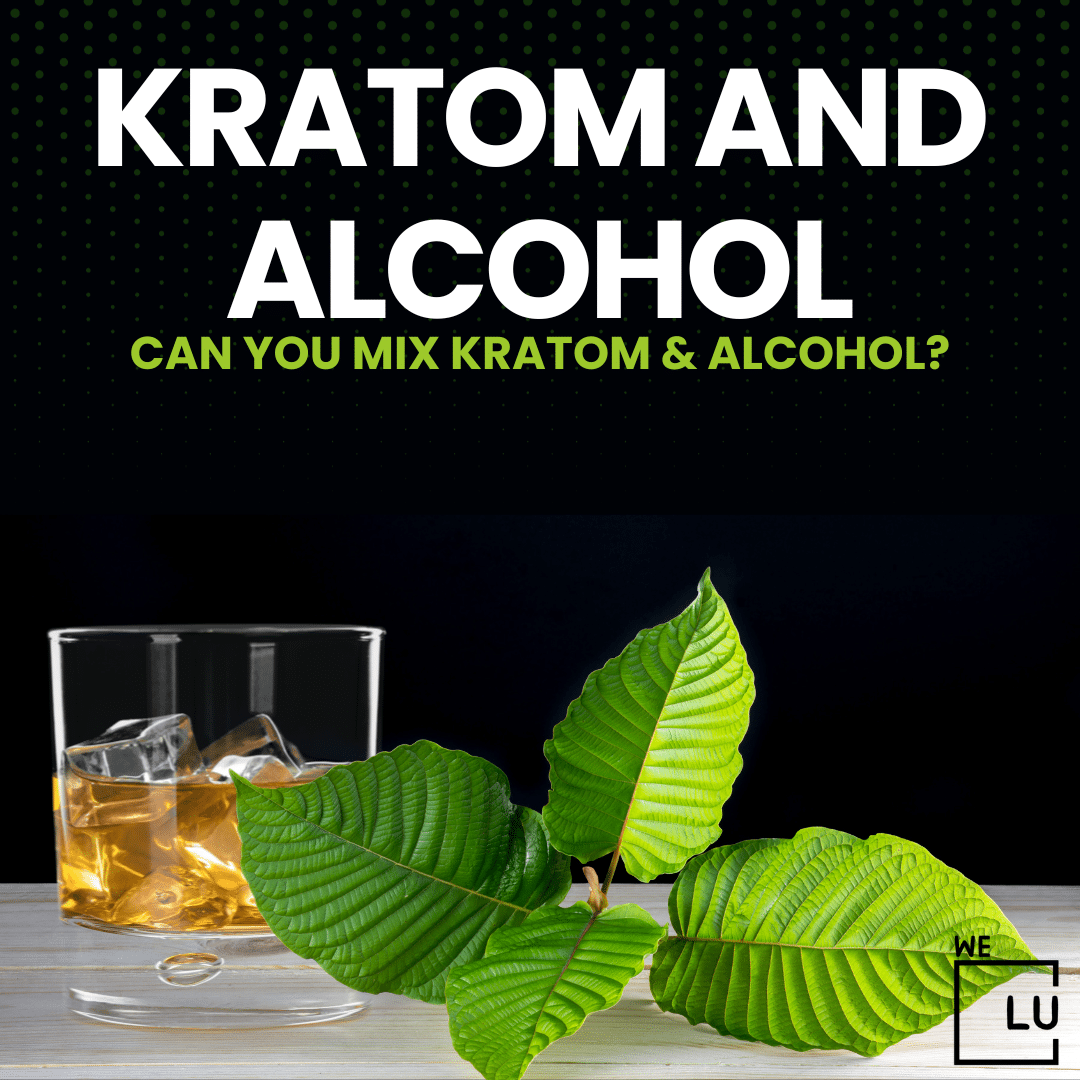Heroin addiction is a complex issue with devastating effects on individuals, their families, and society. One visible manifestation of heroin abuse is the presence of track marks—minor puncture wounds or scars at injection sites. These marks, commonly found on the arms, result from the repetitive use of needles to administer the drug. Even if it seems like the effect is visual, these wounds carry some risk of infection with them, along with other dangers. Read on to learn more about this visible marker of Heroin addiction and what can be done about it.
If you or someone you know is struggling with heroin addiction, take the first step toward a healthier future. Contact We Level Up CA today for confidential and compassionate support. Start the journey to recovery today! Transformation begins with that crucial first step, and we at Level Up CA are here to support you every step of the way.
What Are Heroin Track Marks?
Heroin track marks, also known as needle marks or injection marks, are visible signs on the skin caused by the repeated use of intravenous (IV) drugs. These marks typically appear as minor puncture wounds or scars at the injection site. The term “track marks” comes from the visible tracks or trails that these marks can create along a person’s veins.
Where Do Track Marks Come From?
Heroin is commonly injected by users seeking a rapid and intense onset of the drug’s effects. The repeated use of needles can lead to the formation of scars, bruises, or other skin abnormalities at the injection sites. Over time, as a person continues to inject heroin, the skin around the veins may become damaged and develop a noticeable pattern of tracks.
What Do Track Marks Look Like?
Track marks can vary in appearance depending on several factors, including the individual’s skin tone, the size of the needle used, and the frequency of drug injection. Here are some common characteristics of track marks:
- Puncture Wounds: Track marks often start as minor puncture wounds at the site of injection. These wounds may appear as tiny red dots or small scabs.
- Linear Patterns: As drug users repeatedly inject in the same general area, the puncture wounds can form linear patterns, creating tracks or trails along the veins. These tracks may be more visible in individuals with lighter skin tones.
- Bruising: The injection process can cause bruising around the injection site. Bruises may be reddish or purple and can be an additional sign of intravenous drug use.
- Scarring: Over time, with continued drug use and repeated injections, scar tissue may develop at the injection sites. Scars can be more pronounced and permanent, altering the texture and appearance of the skin.
- Skin Infections: In some cases, the repeated use of unclean needles or unsanitary injection practices can lead to skin infections. Infected injection sites may appear red, swollen, and painful.
How Long Do Heroin Track Marks Last?
The duration for which heroin track marks last can vary widely depending on several factors, including the individual’s healing capacity, the frequency and duration of drug use, and the care given to the injection sites. Here are some general considerations:
- Healing Time: The body can heal, and minor puncture wounds associated with track marks may begin to heal within days to weeks. However, more significant scarring and tissue damage can take longer to fade.
- Scarring: An expected outcome of repeated injections is generally permanent. Scars may remain visible for an extended period, and in some cases, they may be permanent, significantly if the skin has been severely damaged.
- Appearance of Fresh Track Marks: If an individual continues to inject heroin or other substances, new track marks may appear, extending the duration for which these marks are visible.
- Medical Intervention: Seeking medical attention can play a role in the healing process. Proper wound care, infection prevention, and other medical interventions can help minimize the long-term impact of track marks.
- Skin Tone: The visibility of track marks can also be influenced by an individual’s skin tone. People with lighter skin tones may find track marks more noticeable than those with darker skin.
While the physical signs of heroin track marks may fade over time, the underlying issue of substance abuse requires attention. If someone is struggling with heroin or other drug addiction, seeking professional help is crucial. Treatment options, including counseling, therapy, and rehabilitation programs, can provide the necessary support for individuals to overcome addiction and improve their overall well-being.
Heroin Track Mark Scars
Track mark scars resulting from repeated intravenous drug use can vary in appearance and permanence. The severity of scarring depends on factors such as the length and intensity of drug use, the use of clean or contaminated needles, and an individual’s skin type and healing capacity. Here are some characteristics of track mark scars:
- Size and Depth: The size and depth of track mark scars can vary. Smaller, less severe scars may fade over time, while larger or deeper scars may be more noticeable and permanent.
- Color: Scars may appear as discolored areas on the skin. Depending on the healing process and the individual’s skin tone, the color can range from pink or reddish to brown or purplish.
- Texture: The texture of the scarred area can change. Scars may be raised, indented, or have an uneven texture compared to the surrounding skin.
- Visibility: In some cases, track mark scars may be readily visible, especially if they are numerous or located on more exposed areas of the body, such as the arms.
- Concealment: Individuals may attempt to conceal track mark scars with clothing, makeup, or other methods. However, it’s essential to note that hiding the wounds does not address the underlying issues associated with substance abuse.
- Permanent Nature: While some scars may fade with time, others can be permanent. Proper wound care and medical intervention can contribute to minimizing the long-term impact of scarring.
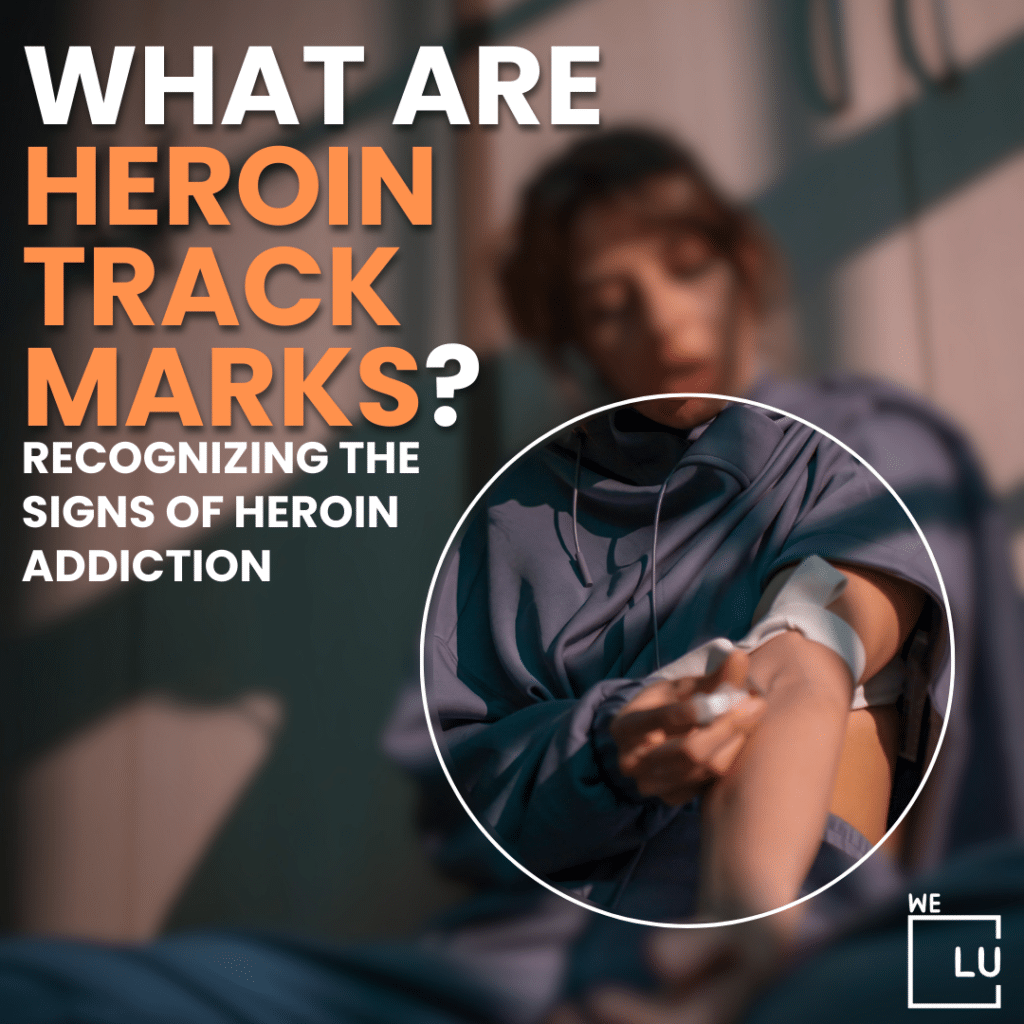
Skip To:
Learn More:
- Heroin Addiction, Symptoms, Effects & Treatment
- Heroin Detox Importance, Process, Duration, Medications, Withdrawal, Programs, Methods, Therapies & Treatments
- Heroin Withdrawal Symptoms, Timeline, Addiction & Treatment
- Heroin Effects. Long Term And Short Term Effects of Heroin
- What does heroin look like? Purity, Cutting Agents, Overdose, Risks, Addiction & Treatment
- Is Heroin A Narcotic? Opioids, Specifics, Street Names, Heroin Addiction, Overdose, Withdrawal & Treatment
- How Long Does Heroin Stay In Your System? Effects, Overdose & Treatment
Risks of Heroin Track Marks
The presence of heroin track marks on the skin is associated with several health risks, both local and systemic. Here are some of the risks associated with heroin track marks:
- Skin Infections: Injection drug use carries a risk of introducing bacteria into the body, leading to skin infections at the injection site. Infections can range from mild cellulitis to more severe conditions like abscesses. The use of unclean needles or unsanitary injection practices increases the likelihood of infections.
- Cellulitis: Cellulitis is a bacterial skin infection that can spread quickly, causing redness, swelling, and tenderness in the affected area. It can be painful and may require medical intervention, including antibiotics.
- Abscesses: Pockets of pus known as abscesses can form at injection sites. Abscesses are a more serious complication and may require drainage, antibiotics, or surgical intervention.
- Thrombophlebitis: Repeated injection into veins can cause inflammation and clot formation, leading to thrombophlebitis. This can cause pain, swelling, and redness along the affected vein.
- Deep Vein Thrombosis (DVT): In severe cases, thrombophlebitis can progress to deep vein thrombosis, where blood clots form in deeper veins. DVT can be a painful medical condition that may lead to complications such as pulmonary embolism.
- Scarring and Tissue Damage: The repeated trauma to the skin and underlying tissues from injections can result in scarring and permanent tissue damage. This can affect the appearance and function of the affected area.
- Transmission of Blood-Borne Infections: Sharing needles or using contaminated needles increases the risk of transmitting blood-borne infections such as HIV/AIDS and hepatitis B and C.
- Compromised Immune System: Chronic drug use, including heroin use, can weaken the immune system, making individuals more susceptible to infections.
Risks associated with heroin track marks extend beyond the physical effects. Addressing the underlying substance abuse issue is crucial for the overall well-being of individuals. Seeking professional help through addiction treatment programs, counseling, and support groups can assist individuals in breaking the cycle of drug dependence and improving their health.

Get Your Life Back
Find Hope & Recovery. Get Safe Comfortable Detox, Addiction Rehab & Dual Diagnosis High-Quality Care.
Hotline (855) 695-1160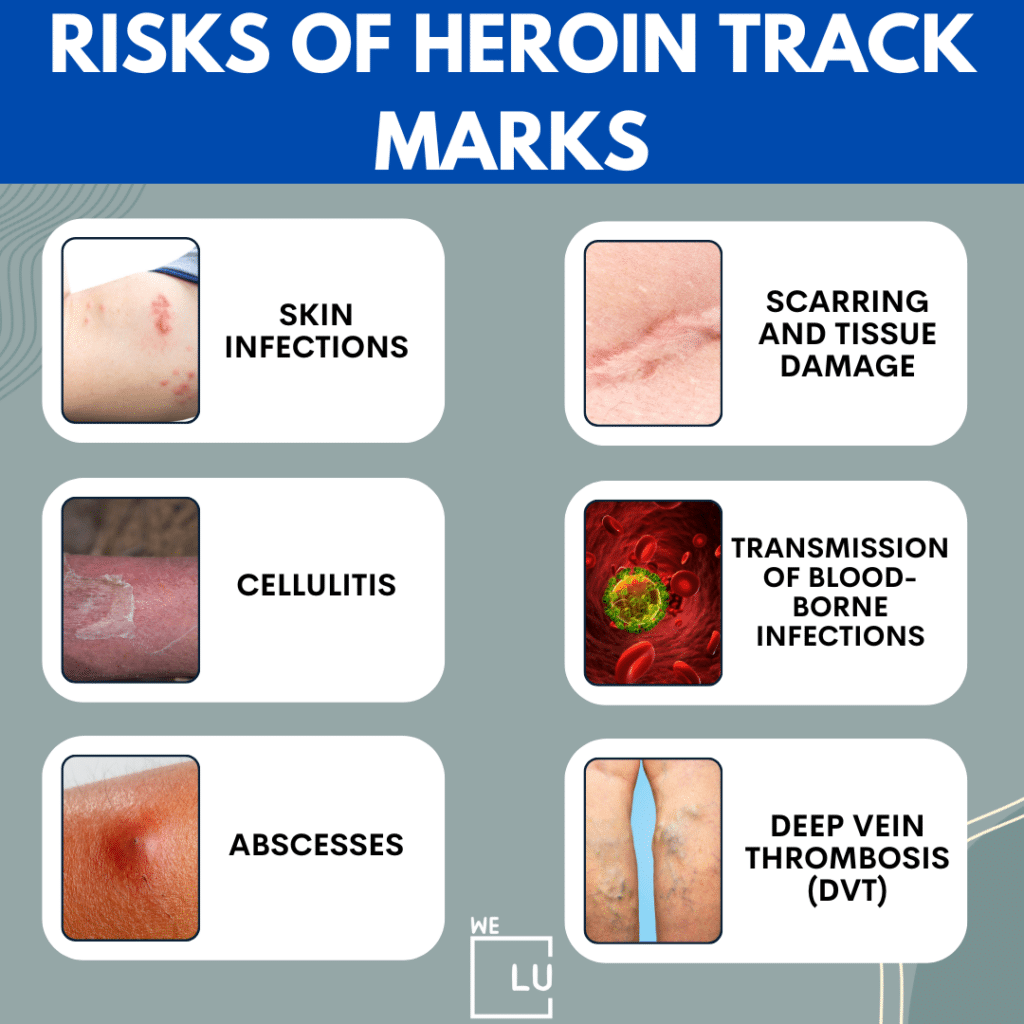
Other Signs Of Heroin Addiction
In addition to track marks, there are some other signs of heroin addiction which include behavioral changes, other physical symptoms, and some other psychological and emotional signs.
We must approach individuals showing signs of heroin addiction with empathy and encourage them to seek professional help. Treatment options, including counseling, therapy, and medication-assisted treatment, can be effective in addressing heroin addiction and promoting recovery.
- Behavioral Changes:
- Social Isolation: Individuals may withdraw from friends and family, preferring to spend time alone or with a new social circle involved in drug use.
- Neglecting Responsibilities: Heroin addiction can lead to a neglect of responsibilities at work, school, or home.
- Physical Symptoms:
- Constricted Pupils: Heroin use often causes pupils to become significantly smaller than usual.
- Slurred Speech: Individuals may exhibit slurred or slowed speech.
- Drowsiness or Nodding Off: Heroin use can result in extreme drowsiness, with users appearing to nod off or “nod out.”
- Psychological and Emotional Signs:
- Mood Swings: Heroin use can lead to mood swings, ranging from euphoria during drug use to irritability and depression during withdrawal.
- Depression and Anxiety: Individuals may experience symptoms of depression or anxiety, especially during periods of drug withdrawal.
- Financial Issues: Heroin addiction can be expensive, leading individuals to experience financial difficulties, borrowing money, or engaging in illegal activities to fund their habit.
- Changes in Appearance:
- Weight Loss: Individuals may experience significant weight loss due to changes in appetite and overall health.
- Poor Hygiene: Neglect of personal hygiene is common among those struggling with addiction.
- Drug Paraphernalia:
- Presence of Needles and Syringes: Finding needles, syringes, or other drug paraphernalia may indicate heroin use.
- Burnt Spoons or Foil: Heroin is often prepared for injection by heating it on a spoon or foil, leaving behind specific paraphernalia.
- Physical Health Issues:
- Constipation: Opioid use, including heroin, can lead to constipation.
- Respiratory Issues: Heroin use can cause respiratory depression, leading to shallow or slow breathing.
- Legal Problems:
- Involvement in Criminal Activities: Some individuals with heroin addiction may engage in criminal activities to obtain the drug or due to impaired judgment.
Get Help. Get Better. Get Your Life Back.
Searching for an Accredited Drug and Alcohol Rehab Centers in Near You?
Even if you have failed previously and relapsed, or are in the middle of a difficult crisis, we stand ready to support you. Our trusted behavioral health specialists will not give up on you. When you feel ready or just want someone to speak to about therapy alternatives to change your life call us. Even if we cannot assist you, we will lead you to wherever you can get support. There is no obligation. Call our hotline today.
FREE Addiction Hotline – Call 24/7Heroin Addiction Treatments
Heroin addiction is a complex and challenging condition, but various treatments and interventions are available to help individuals overcome addiction and work toward recovery. Treatment for heroin addiction often involves a combination of medical, psychological, and social support.
Treatment plans should be tailored to individual needs and may involve a combination of these approaches. It’s essential for individuals seeking treatment to consult with healthcare professionals and addiction specialists to determine the most appropriate course of action for their specific situation. The commitment to long-term recovery often involves ongoing support and lifestyle changes.
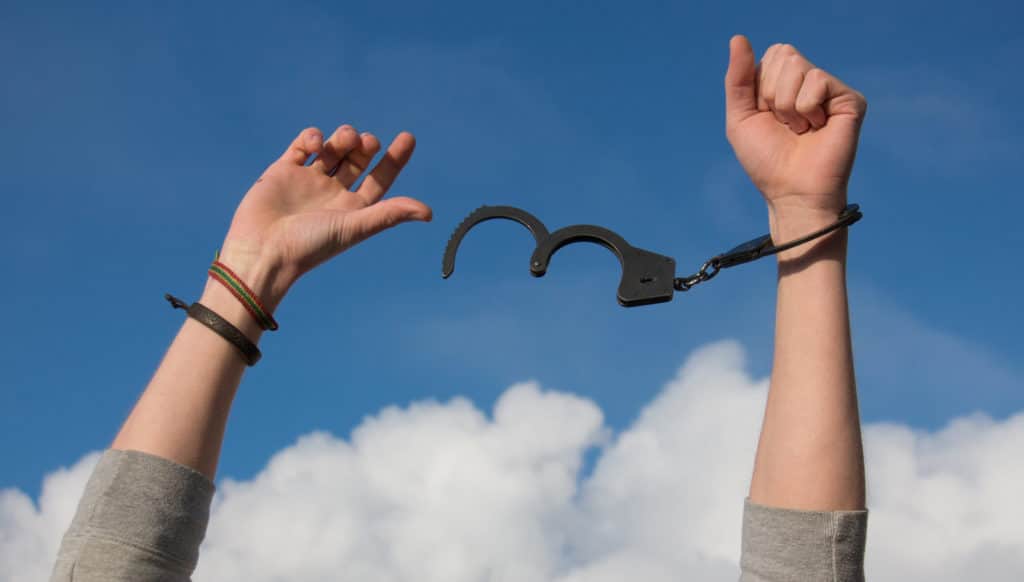
- Medical Detoxification: Detoxification, or detox, involves the process of clearing the body of heroin and managing withdrawal symptoms. Medical detox is conducted in a supervised setting, often with the use of medications to alleviate withdrawal symptoms and ensure safety.
- Medication-Assisted Treatment (MAT):
- Methadone: Methadone is a long-acting opioid agonist that helps reduce cravings and withdrawal symptoms. It is often administered in specialized clinics.
- Buprenorphine: Buprenorphine is a partial opioid agonist that qualified healthcare providers can prescribe. It helps reduce cravings and withdrawal symptoms.
- Naltrexone: Naltrexone is an opioid antagonist that blocks the effects of opioids. It can be used to prevent relapse once detoxification is complete.
- Behavioral Therapies:
- Cognitive-Behavioral Therapy (CBT): CBT helps individuals identify and change negative thought patterns and behaviors associated with drug use.
- Contingency Management: This approach rewards drug-free individuals to reinforce positive behavior.
- Motivational Interviewing: Motivational interviewing is a counseling approach that helps individuals explore and resolve ambivalence about changing their behavior.
- Residential or Inpatient Treatment: Residential treatment involves staying at a treatment facility for an extended period. It provides intensive, 24-hour care, including counseling, therapy, and support.
- Outpatient Treatment: Outpatient programs offer counseling and therapy sessions without needing residential accommodation. This allows individuals to continue their daily activities while receiving treatment.
- Family Therapy: Involving family members in treatment can benefit the individual and their loved ones. Family therapy addresses communication, relationships, and support systems.
- Holistic Therapies: Complementary therapies such as yoga, meditation, and acupuncture may be incorporated to address physical and mental well-being.
First-class Facilities & Amenities
World-class High-Quality Addiction & Mental Health Rehabilitation Treatment
Rehab Centers TourRenowned California Addiction Center. Serene Private Facilities. Inpatient rehab programs vary.
Addiction Helpline (855) 695-1160Proven recovery success experience, backed by a Team w/ History of:
15+
Years of Unified Experience
100s
5-Star Reviews Across Our Centers
10K
Recovery Success Stories Across Our Network
- Low Patient to Therapist Ratio
- Onsite Medical Detox Center
- Comprehensive Dual-Diagnosis Treatment
- Complimentary Family & Alumni Programs
- Coaching, Recovery & Personal Development Events

Impacts Of Heroin Addiction
Heroin addiction can have profound and wide-ranging impacts on various aspects of an individual’s life, affecting their physical health, mental well-being, relationships, and overall quality of life.
The impacts of heroin addiction can vary from person to person, and the severity of consequences may depend on factors such as the duration and intensity of drug use, overall health, and the presence of a support system. Seeking timely and appropriate treatment is crucial for addressing these impacts and supporting the individual’s recovery path.
- Physical Health Issues:
- Increased Risk of Overdose: Heroin use carries a high risk of overdose, which can be fatal.
- Infectious Diseases: Sharing needles or engaging in risky injection practices increases the risk of contracting blood-borne infections such as HIV/AIDS and hepatitis B and C.
- Respiratory Problems: Heroin use can lead to respiratory depression, which may result in breathing difficulties and respiratory infections.
- Mental Health Effects:
- Depression and Anxiety: Chronic heroin use can contribute to symptoms of depression and anxiety.
- Cognitive Impairment: Heroin use may impair cognitive function, affecting memory, attention, and decision-making.
- Social and Relationship Impact:
- Isolation: Individuals with heroin addiction may withdraw from friends and family, leading to social isolation.
- Strained Relationships: Addiction can strain relationships due to broken trust, erratic behavior, and neglect of responsibilities.
- Legal Issues: Legal problems, such as arrests related to drug use or criminal activities, can arise.
- Financial Consequences: Funding a heroin addiction can be expensive, leading to financial difficulties and potential legal consequences.
- Occupational and Educational Impact:
- Job Loss: Individuals may experience difficulties maintaining employment due to absenteeism, poor performance, or legal issues.
- Educational Disruption: Students may face challenges in academic performance and attendance.
- Physical Appearance Changes:
- Weight Loss: Changes in appetite and overall health may lead to noticeable weight loss.
- Poor Personal Hygiene: Neglect of personal care and hygiene is common among those struggling with addiction.
- Risk of Injury and Accidents: Heroin use can impair cognitive function and judgment, increasing the risk of accidents and injuries.
- Tolerance and Dependence:
- Physical Dependence: Continued heroin use can lead to physical dependence, requiring increasing amounts of the drug to achieve the same effects.
- Withdrawal Symptoms: Individuals may experience withdrawal symptoms, such as nausea, sweating, and muscle aches, when not using the drug.
- Risk of Death: Heroin overdose is a significant risk, especially when the purity of the drug is uncertain. Overdose can lead to respiratory failure and death.
- Impact on Family Dynamics:
- Family Stress: Families may experience stress and emotional turmoil as they navigate the challenges of living with a loved one addicted to heroin.
- Codependency: Family members may develop codependent behaviors, enabling the addiction to continue.
World-class, Accredited, 5-Star Reviewed, Effective Addiction & Mental Health Programs. Complete Behavioral Health Inpatient Rehab, Detox plus Co-occuring Disorders Therapy.
CALL (855) 695-1160End the Addiction Pain. End the Emotional Rollercoaster. Get Your Life Back. Start Drug, Alcohol & Dual Diagnosis Mental Health Treatment Now. Get Free No-obligation Guidance by Substance Abuse Specialists Who Understand Addiction & Mental Health Recovery & Know How to Help.
Other Drugs That Leave Track Marks
Track marks, or visible signs of injection, are not exclusive to heroin use. The use of other intravenous drugs can also lead to the formation of track marks. Some substances that may leave track marks include:
- Cocaine: Cocaine is a stimulant drug that, when injected, can lead to the formation of track marks. Cocaine is often dissolved in water and injected into the bloodstream.
- Methamphetamine: Methamphetamine, a powerful stimulant, is sometimes injected. Like cocaine, the use of needles for injecting methamphetamine can result in track marks.
- Prescription Opioids: Some individuals misuse prescription opioids, such as oxycodone or morphine, by crushing the pills and injecting the resulting powder. This can leave track marks similar to those associated with heroin use.
- Amphetamines: Some individuals misuse amphetamines, such as Adderall or Ritalin, by dissolving the pills in water and injecting the solution. This can result in the formation of track marks.
- Benzodiazepines: While benzodiazepines are typically taken orally, some individuals may misuse them by injecting them intravenously. This can lead to track marks, although it is less common compared to other drugs.
The use of needles for drug injection carries significant health risks, regardless of the specific substance. These risks include the potential for infections, abscesses, the transmission of blood-borne diseases, and other complications.
If you suspect someone is engaging in intravenous drug use, it’s crucial to encourage them to seek professional help. Access to addiction treatment, counseling, and support services can play a vital role in addressing substance abuse and its associated risks.
Experience Transformative Recovery at the We Level Up California Treatment Center.
See our authentic success stories. Get inspired. Get the help you deserve.



Start a New Life
Begin with a free call to an addiction & behavioral health treatment advisor. Learn more about our dual-diagnosis programs. The We Level Up treatment center network delivers recovery programs that vary by each treatment facility. Call to learn more.
- Personalized Care
- Caring Accountable Staff
- World-class Amenities
- Licensed & Accredited
- Renowned w/ 100s 5-Star Reviews
We’ll Call You
Inspiring Heroin Addiction Recovery Story. Learn How Carlos Got Clean. What Finally Saved Him?
Search We Level Up CA Heroin Track Marks, Drug & Alcohol Rehab / Detox & Mental Health Topics & Resources
Sources
- ‘Heroin DrugFacts’ – The National Institute on Drug Abuse (drugabuse.gov)
- ‘Heroin’ – National Library of Medicine (Medlineplus.gov)
- Heroin addiction, Sándor Hosztafi, National Library of Medicine (pubmed.ncbi.nlm.nih.gov)
- NIDA. “What is heroin and how is it used?.” National Institute on Drug Abuse, 13 Apr. 2021, https://nida.nih.gov/publications/research-reports/heroin/what-heroin Read More: heroin track marks, heroin marks, heroin needle marks, track marks heroin,
- NIDA. “What effects does heroin have on the body?.” National Institute on Drug Abuse, 22 Mar. 2022, https://nida.nih.gov/publications/research-reports/heroin/effects-of-heroin-on-body Read More: heroin track marks, heroin marks, heroin needle marks, track marks heroin,
- NIDA. “What can be done for a heroin overdose?.” National Institute on Drug Abuse, 2 Nov. 2023, https://nida.nih.gov/publications/research-reports/heroin/what-can-be-done-for-heroin-overdose
- Huecker MR, Koutsothanasis GA, Abbasy MSU, et al. Heroin. [Updated 2023 Dec 4]. In: StatPearls [Internet]. Treasure Island (FL): StatPearls Publishing; 2023 Jan-. Available from: https://www.ncbi.nlm.nih.gov/books/NBK441876/ Read More: heroin track marks, heroin marks, heroin needle marks, track marks heroin,
- National Collaborating Centre for Mental Health (UK). Drug Misuse: Psychosocial Interventions. Leicester (UK): British Psychological Society (UK); 2008. (NICE Clinical Guidelines, No. 51.) 3, INTRODUCTION TO DRUG MISUSE. Available from: https://www.ncbi.nlm.nih.gov/books/NBK53217/
- Marks LR, Nolan NS, Liang SY, Durkin MJ, Weimer MB. Infectious Complications of Injection Drug Use. Med Clin North Am. 2022 Jan;106(1):187-200. doi: 10.1016/j.mcna.2021.08.006. PMID: 34823730. https://pubmed.ncbi.nlm.nih.gov/34823730/ Read More: heroin track marks, heroin marks, heroin needle marks, track marks heroin,
- Zule WA, Vogtsberger KN, Desmond DP. The intravenous injection of illicit drugs and needle sharing: an historical perspective. J Psychoactive Drugs. 1997 Apr-Jun;29(2):199-204. doi: 10.1080/02791072.1997.10400188. PMID: 9250947. https://pubmed.ncbi.nlm.nih.gov/9250947/ Read More: heroin track marks, heroin marks, heroin needle marks, track marks heroin,
